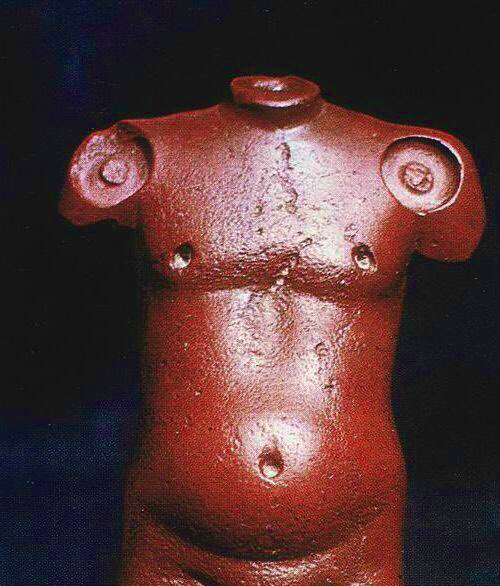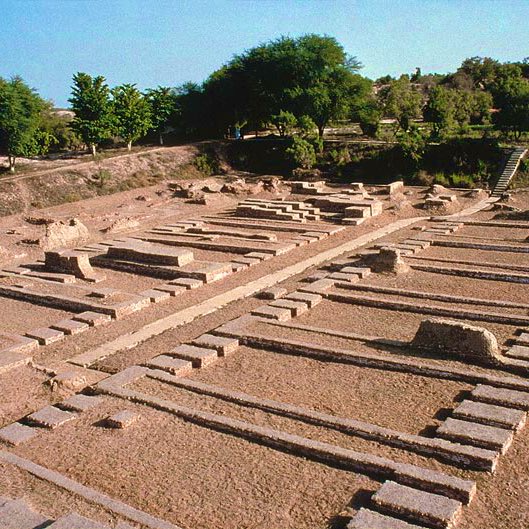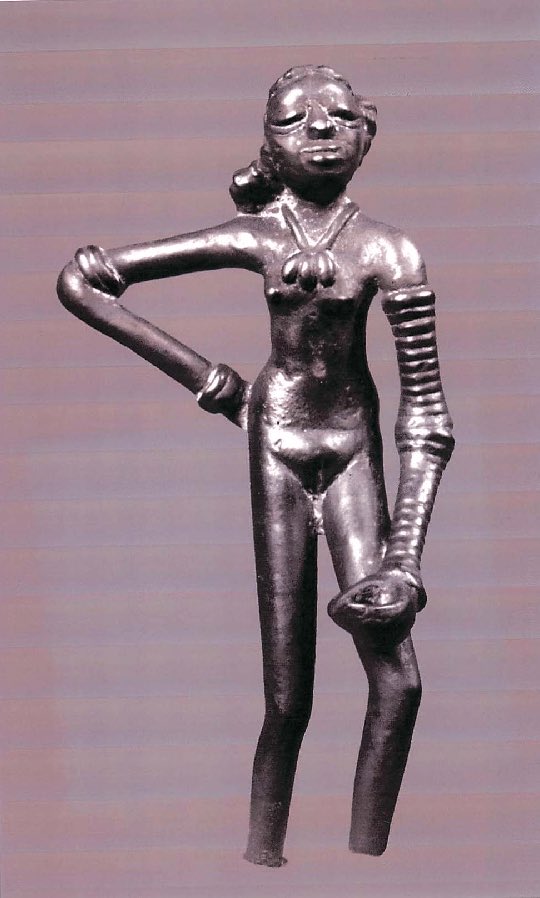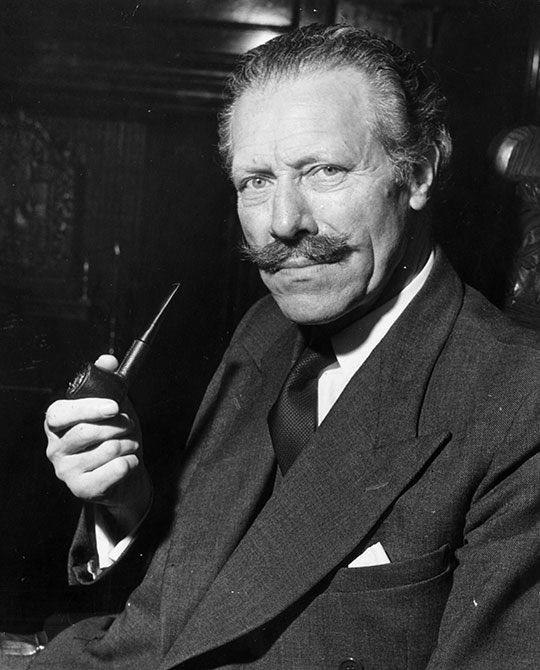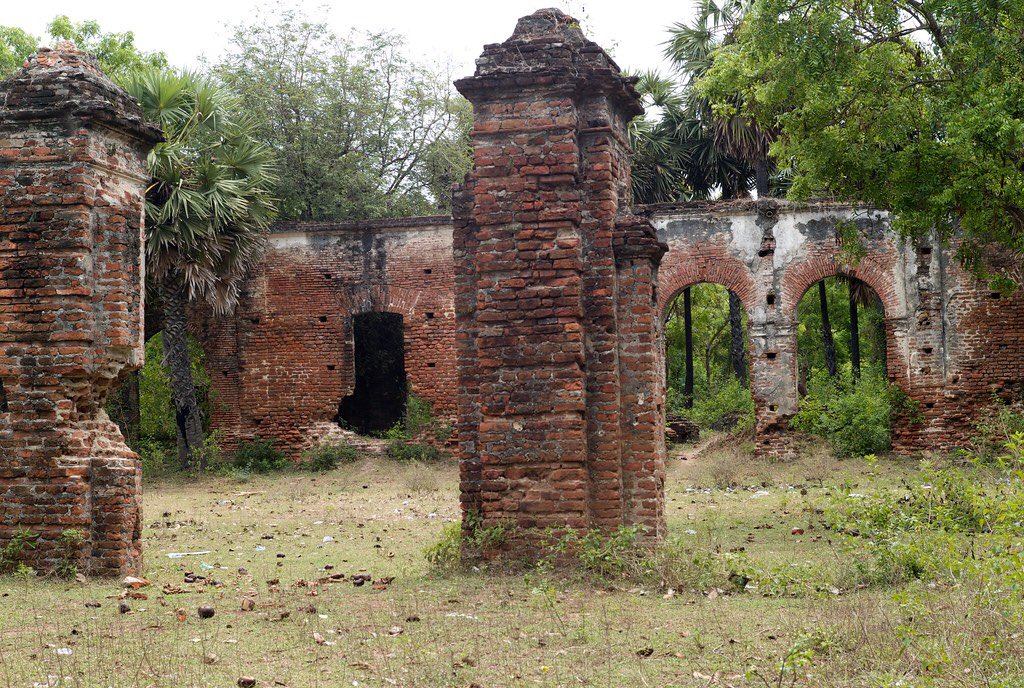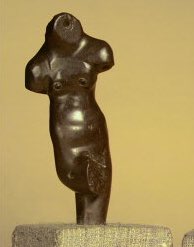1/n
Pandit Madho Sarup Vats was an Indian archaeologist & Sanskrit scholar who served as Director of ASI from 1950 - 54. In 1925, Vats supervised excavations at Harappa till 1934-35. In 1928 he discovered a rare red jasper sculpture of a man’s torso, south of the Great Granary.
Pandit Madho Sarup Vats was an Indian archaeologist & Sanskrit scholar who served as Director of ASI from 1950 - 54. In 1925, Vats supervised excavations at Harappa till 1934-35. In 1928 he discovered a rare red jasper sculpture of a man’s torso, south of the Great Granary.
2/n
What was shocking and exciting about the discovery is that its realism & advanced modeling techniques could only be compared to the best of Greek sculpture which developed thousands of years later. Vats dated the the statue to the Mature Harappan period.
What was shocking and exciting about the discovery is that its realism & advanced modeling techniques could only be compared to the best of Greek sculpture which developed thousands of years later. Vats dated the the statue to the Mature Harappan period.
3/n
It was excavated at the same level where several famous Harappan artifacts were found and dated to 2300 BCE. Moreover, it was nowhere near the area where more recent artifacts were found, so there was no chance of the site being contaminated by objects from a later date.
It was excavated at the same level where several famous Harappan artifacts were found and dated to 2300 BCE. Moreover, it was nowhere near the area where more recent artifacts were found, so there was no chance of the site being contaminated by objects from a later date.
4/n
Despite Vats’ thorough rationale, his British Boss, Sir John Marshall simply refused to believe that such a well modeled sculpture could have been created by Indians 4000 years ago. Vats also discovered a Shiva Lingam in the area which underwhelmed Marshall.
Despite Vats’ thorough rationale, his British Boss, Sir John Marshall simply refused to believe that such a well modeled sculpture could have been created by Indians 4000 years ago. Vats also discovered a Shiva Lingam in the area which underwhelmed Marshall.
5/n
Marshall had reacted the same way on seeing the famous bronze statuette of the Dancing girl in Mohenjo Daro. He said:
“Modelling such as this was unknown in the ancient world up to the Hellenistic age of Greece, and I thought, that some mistake must surely have been made;”
Marshall had reacted the same way on seeing the famous bronze statuette of the Dancing girl in Mohenjo Daro. He said:
“Modelling such as this was unknown in the ancient world up to the Hellenistic age of Greece, and I thought, that some mistake must surely have been made;”
6/n
“These figures must have found their way into levels some 3000 years older than those to which they properly belonged.” Supported by his partner Sir Mortimer Wheeler, Marshall declared that the male torso could only belong 3000 years later to the Gupta period.
“These figures must have found their way into levels some 3000 years older than those to which they properly belonged.” Supported by his partner Sir Mortimer Wheeler, Marshall declared that the male torso could only belong 3000 years later to the Gupta period.
7/n
Vats however refused to back down & to this day the date of the sculpture is “disputed”. Wheeler, who brought his military attitude to archaeology was famous for his contempt against Hindus. He was a fan of Max Mueller& #39;s commentaries on the Rig Veda.
Vats however refused to back down & to this day the date of the sculpture is “disputed”. Wheeler, who brought his military attitude to archaeology was famous for his contempt against Hindus. He was a fan of Max Mueller& #39;s commentaries on the Rig Veda.
8/n
Even before the discoveries he believed in Mueller’s myths about how Aryan chief Indra wreaked havoc on citadels, "Where are-- or were--these citadels," he wrote. When skeletons were discovered at Mohenjo Daro, Wheeler was triumphant.
Even before the discoveries he believed in Mueller’s myths about how Aryan chief Indra wreaked havoc on citadels, "Where are-- or were--these citadels," he wrote. When skeletons were discovered at Mohenjo Daro, Wheeler was triumphant.
9/n
On circumstantial evidence, Indra stands accused," he wrote before retiring. The same Wheeler shamelessly stole credit for finding the ancient Tamil port of Arikamedu which was actually discovered by Indian archaeologist Dr. Aiyappan, the ASI director of the Madras Museum.
On circumstantial evidence, Indra stands accused," he wrote before retiring. The same Wheeler shamelessly stole credit for finding the ancient Tamil port of Arikamedu which was actually discovered by Indian archaeologist Dr. Aiyappan, the ASI director of the Madras Museum.
10/n
When a similarly sculpted figure of a dancer standing on his right leg, with body bent from the waist up was found, Marshall said “It will be observed, there are socket holes in the neck and shoulders for attachment of head and arms, which were made in separate pieces. “
When a similarly sculpted figure of a dancer standing on his right leg, with body bent from the waist up was found, Marshall said “It will be observed, there are socket holes in the neck and shoulders for attachment of head and arms, which were made in separate pieces. “
11/n
“So far as I know, this technique is without parallel among sculptors of the historic period, whether of the Indo-Hellenistic or any other school. I infer from the thickness of the neck, that the dancer was 3 faced, and may represent Siva Nataraja."
“So far as I know, this technique is without parallel among sculptors of the historic period, whether of the Indo-Hellenistic or any other school. I infer from the thickness of the neck, that the dancer was 3 faced, and may represent Siva Nataraja."
12/n
These Indus Valley artifacts clearly demonstrate that Indians possessed unique advanced sculptural techniques over 4500 years ago. It is also likely that they represent Hindu icons. It’s high time we re-examine such incredible evidence objectively without Western biases.
These Indus Valley artifacts clearly demonstrate that Indians possessed unique advanced sculptural techniques over 4500 years ago. It is also likely that they represent Hindu icons. It’s high time we re-examine such incredible evidence objectively without Western biases.

 Read on Twitter
Read on Twitter
